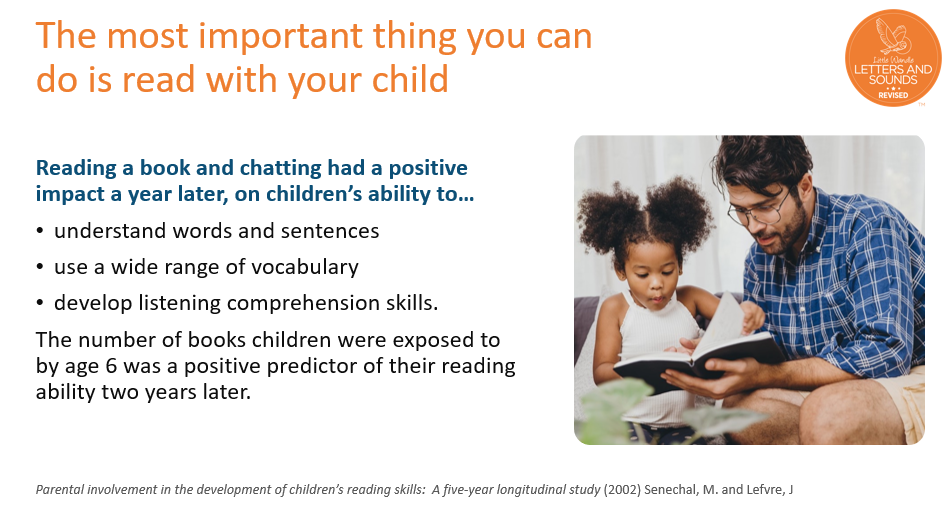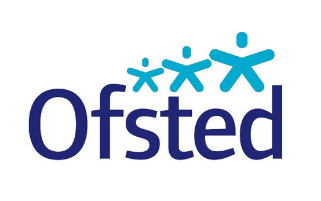Phonics
Little Wandle Letters and Sounds Revised
Our school has chosen Little Wandle Letters and Sounds Revised as our systematic, synthetic phonics (SSP) programme to teach early reading and spelling.
Blending to read words
Some children learn to blend really quickly, and others take a little longer. If your child is finding it difficult, ask your child’s teacher for ways to help at home – playing blending games at home is so helpful!
Glossary of Little Wandle Letters and Sounds Revised terminology
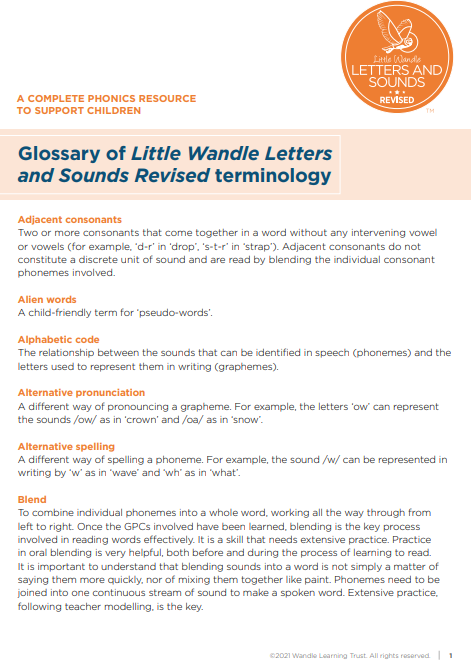
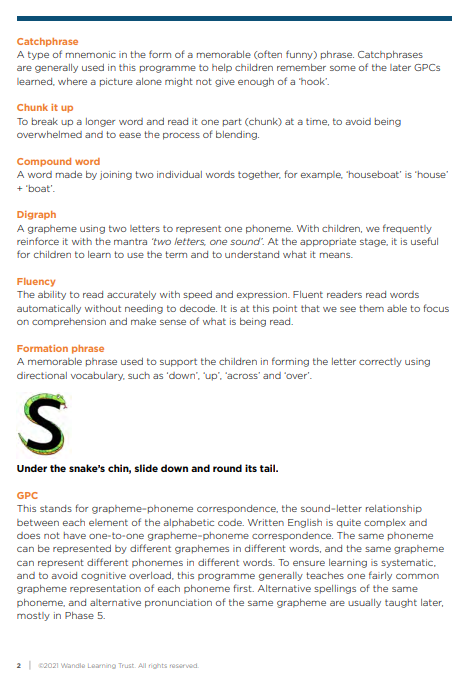
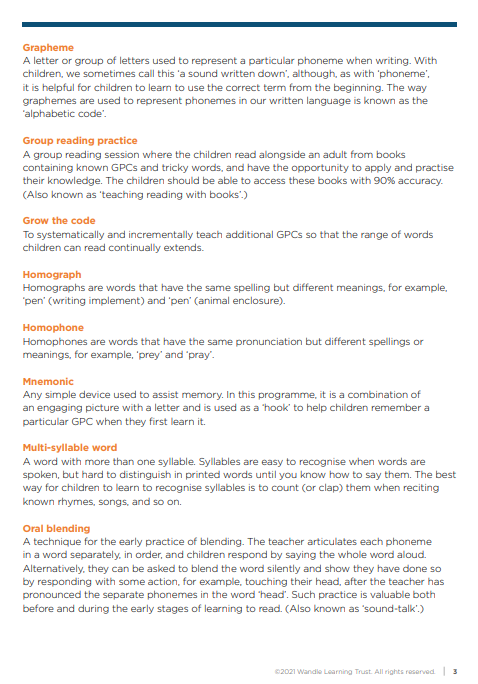
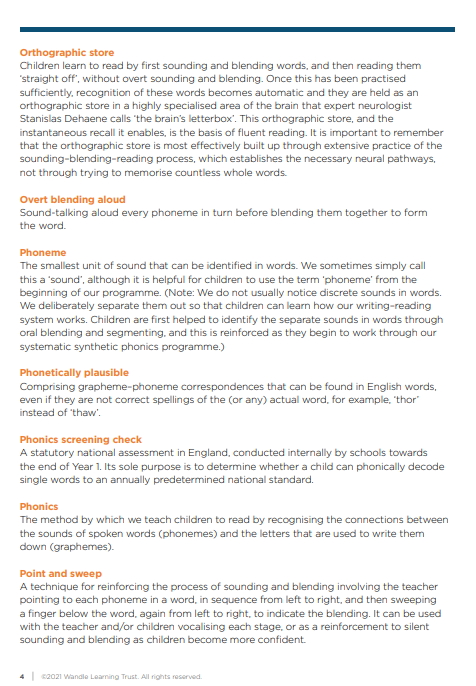
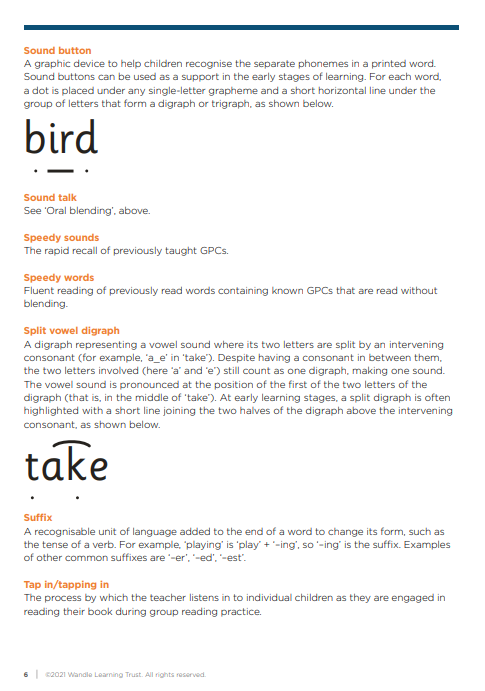
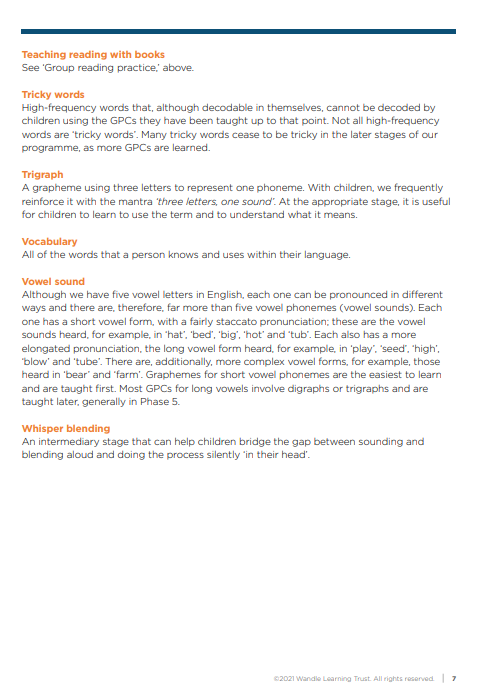
Teaching order
We usually teach four new sounds a week and have a review lesson on a Friday. You will get a list of the sounds that we are learning to have at home. This will help you with formation and pronunciation.
Gradually your child learns the entire alphabetic code.
We will work our way through the whole Little Wandle Programme until your child can read fluently.
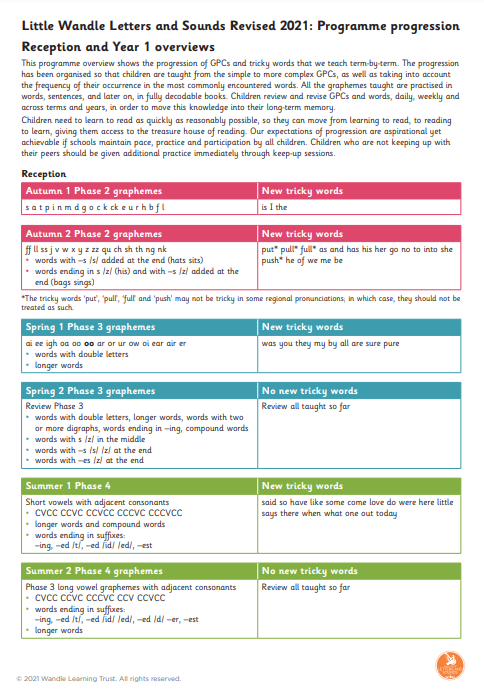
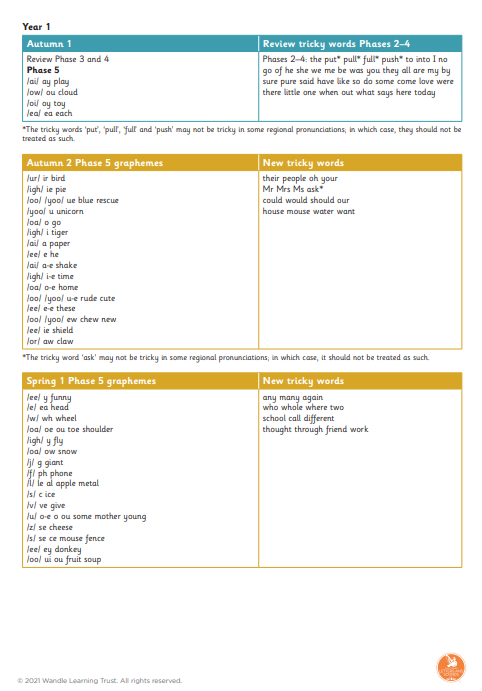
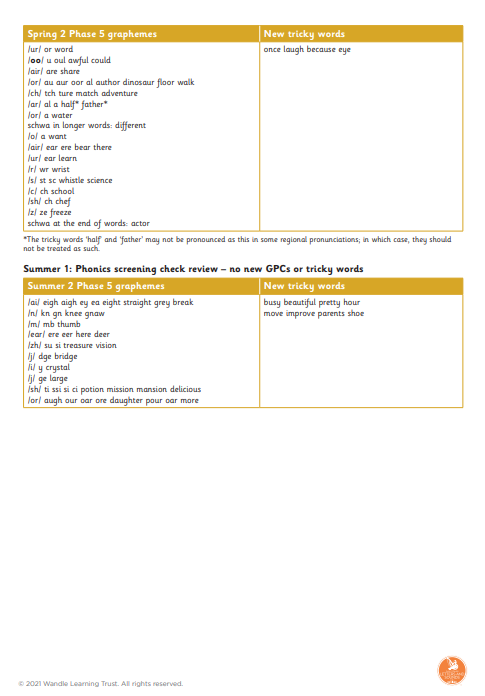
How we make learning stick
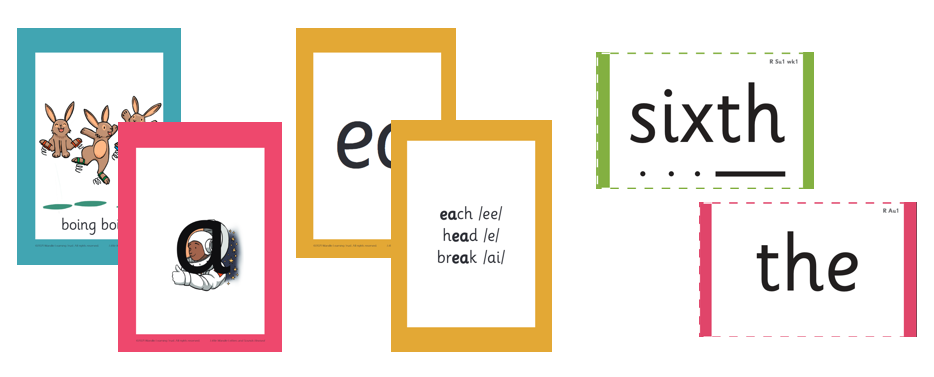
There are specific resources for the Little Wandle Programme which the children will be very familiar with. Each sound that we teach to begin with has either a mnemonic or a phrase like boing-boing for ‘oi’. This helps the children recognise and remember the graphemes. Every time we teach a new sound, we also read words during the phonics lesson that contain that new sound so that the children practise what they have learned. We then go on to reading a sentence containing some of those words. We have displays in the classroom and on the tables to support the children throughout the day.
Reading and spelling
This is an example of what the children learn in Year 1.
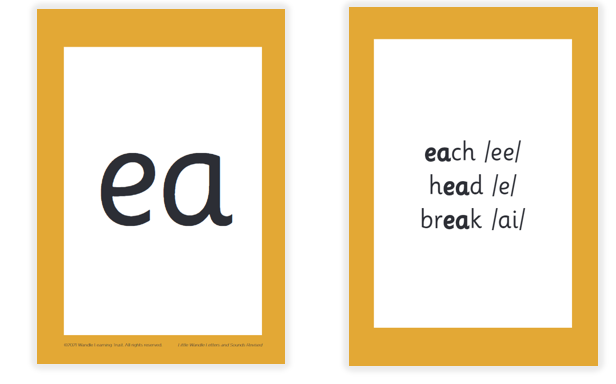
Children learn that there are graphemes that can have different sounds and sounds that can be made with different letters.
How do we teach reading in books?
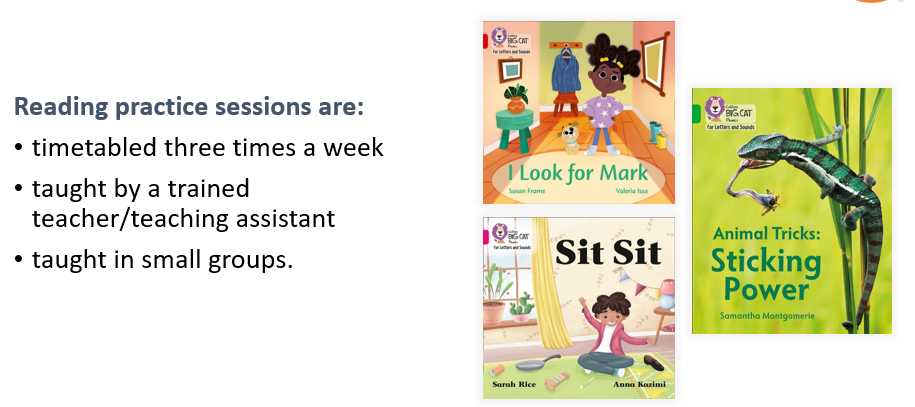
The children read the same book three times in a week. The first time we work on decoding (sounding out) the words, the second time we work on prosody which is reading with expression – making the book sound more interesting with our story-teller voice or our David Attenborough voice – and the third time we look at comprehension. We read the books three times at school because we want to develop the fluency. The more they see words the more they begin to read them automatically without having to sound them out.
We assess your child every six weeks to check progress. Any child who needs extra support has daily keep-up sessions planned for them.
